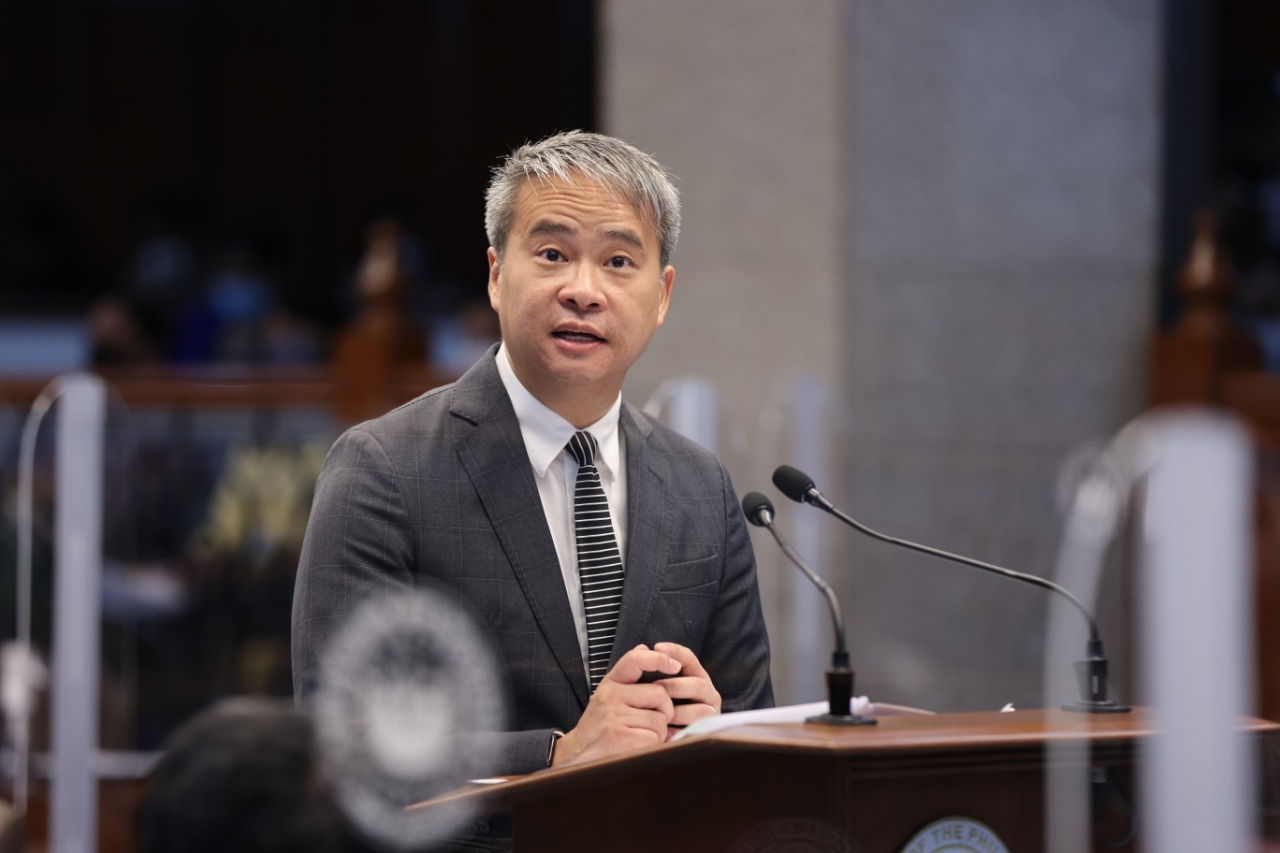
Co-sponsorship speech on the Safe Pathways Act
Mr. President and distinguished colleagues:
We commend our dear colleague, the Senator from Taguig and Pateros, Senator Pia Cayetano, for sponsoring this measure. At the onset, we would like to note that we also filed Senate Bill No. 1138, or the Safe Pathways Act,” several weeks ago, which was also referred to the Committee on Sustainable Development Goals, Innovation, and Futures Thinking. Thus, we thank Senator Pia for agreeing to take into consideration our bill in this Committee Report.
It is my honor and privilege to co-sponsor Senate Bill No. 1290, under Committee Report No. 2, entitled “An Act Institutionalizing Active Transport by Establishing a Safe Pathways Network of Bicycle Lanes, Walkways and Slow Streets, and For Other Purposes,” or the “Walkable and Bikeable Communities Act.”
When the COVID-19 pandemic and the subsequent strict quarantine measures were put in place, everything stopped. All persons were required to remain at home, and all modes of transportation had been suspended. Noong araw po na iyon, masasabi nating “tumigil ang buong mundo.”
While essential services continued, there is no public transportation available, forcing many of our frontliners such as healthcare workers, workers in establishments providing food, medicine and other essential goods, and many others who had to resort to alternative modes of mobility, such as bikes and scooters to go to their places of work.

We believe that it is time that we ensure that active transport becomes one of the primary modes of transportation for all Filipinos, and not anymore an alternative.
More than two (2) years have passed since then. Data shows that active transport is here to stay. Based on a face-to-face survey conducted by the Social Weather Stations in November 2020 and May 2021, the estimated number of households that owned bikes grew from 2 million to 4.9 million.[1]
In the same survey, it is reported that around 4.7 million Filipinos use bikes for essential activities, including market/grocery/store runs (3.1 million), going to and from work (1.4 million), and bikes for work-related or livelihood activities (1.1 million).[2] Filipinos also use bikes for recreational activities, with an estimated 2.3 million using bikes for exercising, sightseeing, or playing.[3]
We would also like to put on record that in 2021, the Department of Transportation established almost 500 kilometers of bike lanes along national roads, including those in Metro Manila, Metro Cebu, and Metro Davao, with pavement markings or physical separators and road signs.[4]
Nonetheless, we believe that the investments we made in active transport infrastructure should be further reinforced. That is why this representation likewise authored and co-sponsored the bill to establish a Safe Pathways Network of bicycle lanes, walkways, and slow streets that connects commuters to where they want and need to go. We will also promote the establishment of bike lanes and walkways that are physically separated from the main road through physical barriers or other separators. We likewise put emphasis on promoting an environment that encourages active transport by ensuring that there are secure bicycle racks and other end-of-trip facilities in public places.
With this measure, we also aim to decongest our roads and provide one of the solutions to address traffic. Even prior to the pandemic, we note that based on a study conducted by the Japan International Coordination Agency (JICA), the worsening traffic in Metro Manila costs Php3.5 Billion in lost opportunities per day[5] in 2017. Nagbalik na po ito sa kasalukuyan. Everyday, we lose several hours on the road to and from work or school, which could have been spent instead with our loved ones.
We believe that it is time that we ensure that active transport becomes one of the primary modes of transportation for all Filipinos, and not anymore an alternative. Our primary mode of transportation should be environmentally friendly, promote healthy living, and be accessible to low-income Filipinos.
Thank you very much and God bless us all.
SEE FULL VIDEO OF THE SPEECH HERE
Footnotes:
[1] Social Weather Stations, Bicycle Usage among Filipino Households during the Covid-19 Pandemic, accessible at http://www.sws.org.ph/downloads/publications/pr20211126%20-%20WAPOR%20Asia%202021-Bicycle%20Usage%20Among%20Filipino%20Households%20During%20the%20Covid-19%20Pandemic-Christian%20Michael%20Entoma.pdf (last accessed September 7, 2022).
[2] Id.
[3] Id.
[4] January 19, 2022. From Crises to opportunity: How the Philippines built 500km of bike lanes in less than a year. World Bank. Accessible at https://blogs.worldbank.org/transport/crisis-opportunity-how-philippines-built-500km-bike-lanes-less-year#:~:text=Within%209%20months%2C%20the%20Philippines,and%20sustainable%20form%20of%20transport (last accessed September 7, 2022).
[5] https://newsinfo.inquirer.net/970553/jica-traffic-congestion-now-costs-p3-5-billion-a-day-metro-manila-traffic-jica-cost-of-traffic
